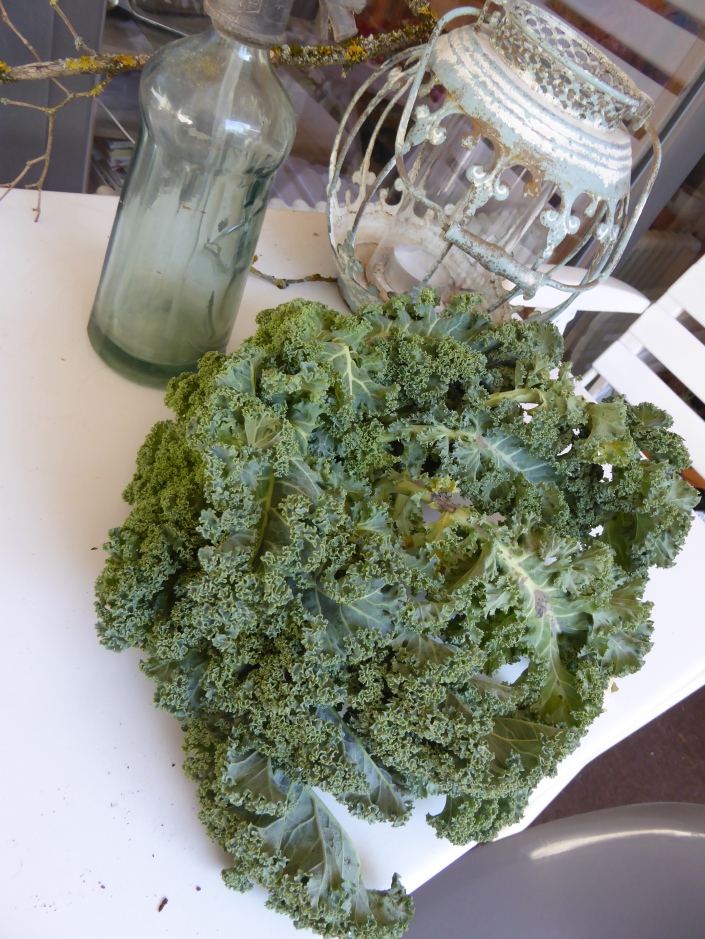Day: October 17, 2018
Italian kale soup: the ribollita
Lacinato kale (called cavolo nero, literally “black cabbage”, in Italian and often in English as well) is a variety of kale with a long tradition in Italian cuisine, especially that of Tuscany. Therefore it’s also known as Tuscan kale, Tuscan cabbage, Italian kale, dinosaur kale, black kale, flat back cabbage, palm tree kale, or black Tuscan palm.
Lacinato kale has been grown in Tuscany for centuries, and it is one of the traditional ingredients of minestrone and ribollita soup. Lacinato kale, like most other kale varieties are usually blanched first and then sautéed with other flavorful ingredients for instance in Campanian cuisine anchovies are often added. It is commonly used in pastas and soups, but can also be eaten raw, in a salad.
In Dutch, it is called zwarte kool (black cabbage) or palmkool, referring to the palm-like shape with the leaves growing from the stem, especially after the bottom leaves are harvested.
The cultivar version of kale is very popular among gardeners because of its color and texture, and was listed amongst the plants Thomas Jefferson (president of USA) recorded in his 1777 garden at Monticello villa. The plant grows to a height of two feet, with blistered leaves often over one foot in length each and two to four inches wide. The “straplike” leaves are typically harvested from the bottom of the stem, leaving the remainder of the plant resembling a palm tree.
Kale in the kitchen: ribollita or minestrone soup with kale
In Tuscan cuisine, lacinato kale is often used in ribollita (“twice cooked”), a thick, hearty soup made up of ingredients cooked for a meal the day before.
This soup is made with potage, bread and vegetables. There are many variations but the main ingredients always include leftover bread, cannellini beans, cabbage, kale, and inexpensive vegetables such as carrot, beans, chard, celery, potatoes and onion. Its name literally means “reboiled”.
Like most Tuscan cuisine, the soup has peasant origins. It was originally made by reheating (i.e. reboiling) the leftover minestrone or vegetable soup from the previous day. Some sources date it back to the Middle Ages, when the servants gathered up food-soaked bread trenchers from feudal lords’ banquets and boiled them for their own dinners.
You can also have delicious and healthy vegetable dish on your table in about 15 minutes. Heat up olive oil, garlic and chili flakes in a big pan. Throw in the leafy green kale (cut) and coat them all with the oil. Add a little water and bring it to a rapid simmer. Cover the pan. In a few minutes take off the lid and let the water evaporate. Sauté the wilted greens in the garlic-infused oil until they’re tender.